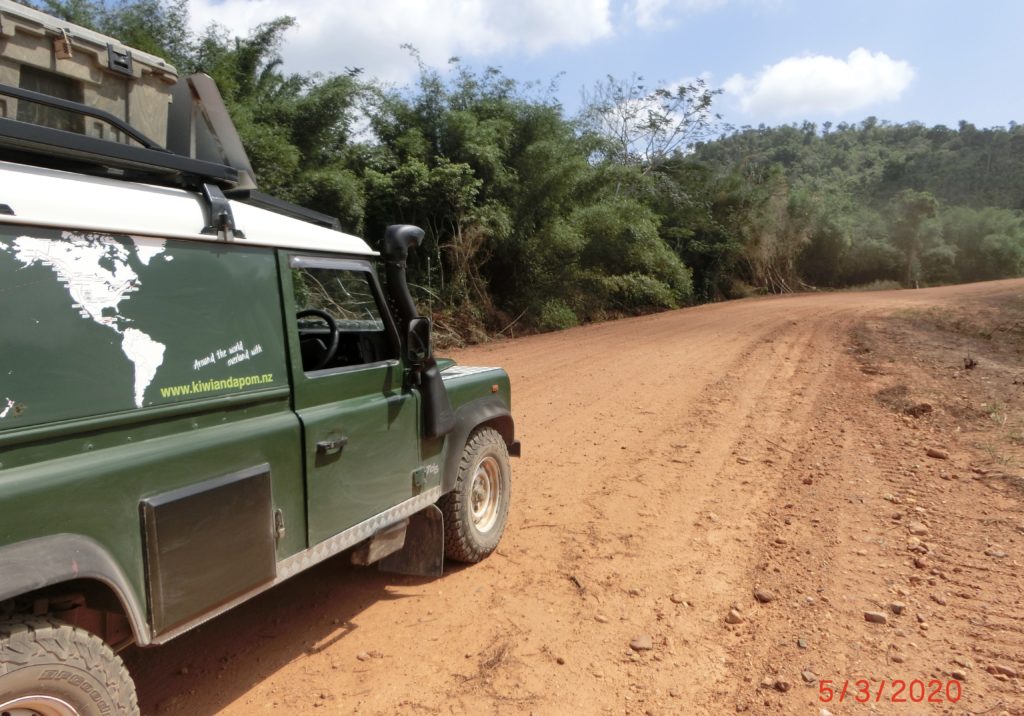Someone we spoke to in Mexico and asked if topes were just a plague in Mexico, or if they were rampant through Central and South America, told us they were just a Mexican feature. They lied. Belize has its fair share too. Although here they are just referred to as common-or-garden “bumps”.
The different ethnic groups are just that. Very different. The Mennonites are pious and hard working. The creoles and particularly the Garifuna – a mix of black African slaves and indigenous South American descent, are very laid back and seem to be more of an under class. It is these people who ask us for money. I am reminded of Jamaica sometimes, as there are Rastafarian here too. There are, of course, Mayans as well.
Yesterday I was rather disappointed with Caye Caulker. Having read it was a quiet, laid back Island with no cars, I was expecting somewhere tranquil where we could walk to a nice beach and park ourselves for the day. Not so, as Dennis already mentioned, golf buggies racing everywhere, maintenance vehicles and bikes by the dozen. No public beaches, everything developed and swarming with tourists from cruise ships.
This morning we were up early after a quiet night in the Old Marina. A small patch of grass suited us perfectly. We were entertained by a mother hen with seven chicks. A puppy decided to take too much notice of her chicks and she attacked him ferociously. When the chicks walked under Poki, I was afraid she would go for me when in tried to get inside.
Later in the evening we were visited by a large crab.

He seemed to want to shelter under Poki too. The only other animal life, countless no-see-ums, or sand flies, which ate me alive.
The scenery today soon changed. The northern part of the country had been quite flat, growing mainly sugar cane. Now we started to see mountains, covered in jungle. Heading for Hopkins, on the beach to the south, we turn off the main highway onto a dirt road. It became more and more jungly. Hardly any other traffic, but there were surveyors in several places along the road. It is to be upgraded. The British government is helping with funding.
It is sad to see so much clearance of the jungle. It appears to have been cleared mainly for orange orchards. They are not well looked after. The trees are scruffy, the fields full of weeds and the jungle trying to take back over. However, we see huge trucks full transporting oranges. Despite too much attention, they seem to produce. Dennis thought we should try some, so stopped to pick a few. They taste nice and are very juicy, but have thick pithy bits. They must be used for their juice.
The jungle is quite thick and the dirt road a rich red. We hope to see wildlife. Monkeys, tapirs or toucans, perhaps. No luck, we see nothing, except a squirrel when we stop for lunch.
We come to a turning to a Manatee Sanctuary and go and explore. It is a Garifuna village and very poor. We ask a guy who stops by us on a horse if we can do a tour to see manatees. He says “Yes”. It costs US$70 for an hour, though. We think this is expensive and drive further into the village.
We stop at a house with two large young men lounging on a balcony playing very loud music. One comes over to Poki, without turning the music down. Conversation is difficult, but he says he can take us to the manatee hole, where there are currently 15 manatee. Again the price is US$70 and he won’t budge. I think too many American tourists, probably from the cruise ships, must come to see the manatee, to make the price so expensive.
Giving up we headed back to the main road. Next stop was in the seaside town of Dangriga. Apparently the largest town in southern Belize. It is the spiritual capital of the Garifuna people and is tumbledown and messy. We do find a nice shady spot under palm trees, by the beach, where we have lunch. Afterwards we sit and watch the pelicans and gulls fishing. I write my diary and Dennis works on the blog.
We set off for Hopkins and get a message from Sarah to say they are having a nice cold beer in a little bar at the northern end of the beach. Hopkins is quaint with little shops, restaurants and bars and rooms for rent. It’s only tiny, so we soon find the others in the beach bar. Joining them for a beer, we discuss where to camp for the night. We could stay where we are, but there is no shade.
It is so hot we cannot manage in Poki without shade. It is just unbearable. After our beer, we head back down the beach, looking for a more shady spot. There are buildings all along the shore, but the beach area is public land. We find a spot under some palm trees by the beach and Andy, who lives in the closest house, says it is fine for us to park there. Later Tim and Sarah come and join us.
Views: 33






